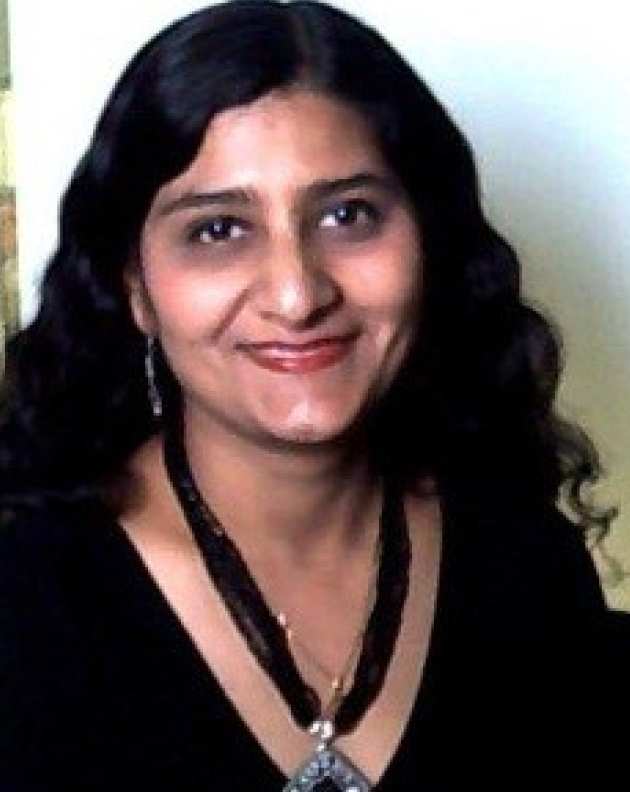Centre Blog - Prof Ipsita Roy

I have been associated with the BHF Cardiovascular Regenerative Medicine Centre at Imperial College London, as a co-PI since 2014. It has been an incredible journey throughout these years and my knowledge on cardiac physiology and the current needs for cardiovascular regeneration have increased tremendously. I have been exposed to work carried out by stalwarts in the area and it has been one of the most academically fulfilling experience in my career. I must begin by thanking Professor Sian Harding for including me in this excellent Centre!
My role in the Centre has been the provision of suitable Biomaterials for Cardiovascular Regeneration. The focus of my work has been on natural polymers of bacterial origin including a family of FDA-approved polymers, Polyhydroxyalkanoates (PHAs), produced using bacterial fermentation. PHAs are of two main types, short chain length PHAs (scl-PHAs), that are normally hard and brittle in nature, and medium chain length PHAs (mcl-PHAs), that are soft and elastomeric in nature. They are highly biocompatible and bioresorbable polymers and their degradation products are natural metabolites, i.e. hydroxyacyl-CoAs. In contrast to PLA and PLGA, the degradation products of PHAs are not highly acidic in nature, leading to reduced inflammatory response. Also, PHAs undergo surface degradation versus the bulk degradation observed in PLA and PLGA, hence PHA-based structures are relatively more stable and degrade in a more controlled manner. Finally, and not the least PHAs exhibit a huge variation in their material properties and degradation rates, allowing the choice of a suitable PHA for different tissue types, in the context of tissue engineering (TE) and regenerative medicine. I have used PHAs for a range of different applications including cardiac, nerve, skin, bone, cartilage and pancreas linked tissue engineering; controlled drug delivery and for medical device development including biodegradable stents and nerve conduits.
In the Centre, I have been working in collaboration with Professor Sian Harding, Professor Cesare Terracciano, Professor Carolyn Carr, Professor Molly Stevens and Professor Costanza Emanueli on various aspects of cardiac regeneration. In addition, outside the Centre, I have also collaborated with Professor Mohan Edirisinghe, University College London for the polymer processing and Professor Jan Czernuszka, University of Oxford for the collagen-based scaffolds, in the context of cardiac regeneration.
The first aspect of my work has involved the development of PHA-based cardiac patches. Initially, solvent cast films produced using elastomeric mcl-PHAs and their ability to support the attachment and proliferation of neonatal rat cardiomyocytes and human pluripotent stem cell-derived cardiomyocytes (hPSC-CMs) were investigated. The results obtained were highly promising, showing excellent cell viability, development of mature cardiomyocytes from the hPSC-CMs with ideal sarcomere length, nuclear density and calcium handling properties. These excellent results prompted us to take this work forward using PHA-based solution electrospun matrices and gyrospun matrices. In both cases the human iPSC-CMs attached well and formed mature cardiomyocytes with all the desired properties described above. As expected, the micro/nanotopography created by the electrospun and gyrospun fibres led to improved cardiomyocyte maturation. The human PSC-CMs that were seeded on the matrices with aligned fibres exhibited highly mature properties including an ideal aspect ratio, characteristic of mature cardiomyocytes. With these promising results, we are now progressing towards the development of melt electrospun PHA- based sheets, where we are co-seeding both hPSC-CMs and human pluripotent stem cell-derived endothelial cells (hPSC-ECs), in order to develop cardiac tissue with vasculature. These patches have now been sutured onto rat hearts and preliminary results look highly promising with minimal inflammatory response.
The second aspect of the work involves controlled delivery of active factors using PHA-based microspheres. The main active factor that we have initiated this work with is VEGF. This has been encapsulated within P(3HB) microspheres and then included within collagen based scaffolds. Preliminary results indicate that the controlled release of VEGF has led to increased vascularisation. We are looking in to the controlled delivery of other active factors which are being currently identified. The final aspect of the work, which we have yet to initiate, is related to PHA scaffold mediated-epicardial delivery of therapeutic exosomes.
The ultimate fruition of this work will be clinical translation and I aim to work hard along with other members of the Centre to achieve this goal.
In conclusion, being part of this Centre has been one the best learning experiences of my academic career. The Centre brings together great minds in the area of Cardiac regeneration and I strongly believe will bring new innovative solutions forward to the clinic in the near future. In addition to science I have had great fun interacting with all members of the Centre, almost like an extended family! I look forward to lots of excellent science and fun in the future!
Professor Ipsita Roy
School of Life Sciences
University of Westminster
London


